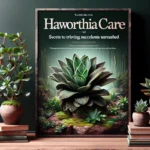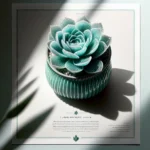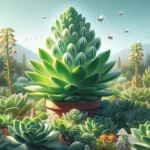Introduction to Haworthia Venosa
Imagine a miniature alien landscape nestled in a pot on your windowsill, where geometric patterns play across flesy leaves, each marked with a network of veined tessellations. This isn’t the stuff of science fiction, but rather the reality of growing Haworthia venosa, a captivating succulent that draws the eye and enchants the imagination.
Native to the arid regions of Southern Africa, this little gem offers a dynamic blend of rugged survival and intricate beauty. Its signature characteristic—a mosaic of translucent ‘leaf windows’—not only adds a visual wow factor but also serves a clever purpose. These adaptations allow the plant to soak up every drop of light, a nifty trick for thriving in the dappled shadows beneath rocky outcrops or other plants.
For those embarking on a horticultural voyage, Haworthia venosa emerges as the perfect cabin mate. It’s an ideal choice for plant enthusiasts looking to dip their toes into the succulent world, as well as seasoned green thumbs seeking to add a touch of the exotic to their collections. Discover the joys of nurturing these fascinating plants, where each uniquely patterned leaf forms a testament to nature’s artistry.
Dive into the world of this tessellated treasure and find out why Haworthia venosa is not just another succulent. It’s a botanical curiosity, an excellent conversation starter, and a resilient companion that asks for very little but gives back a bountiful dose of nature’s geometric design.
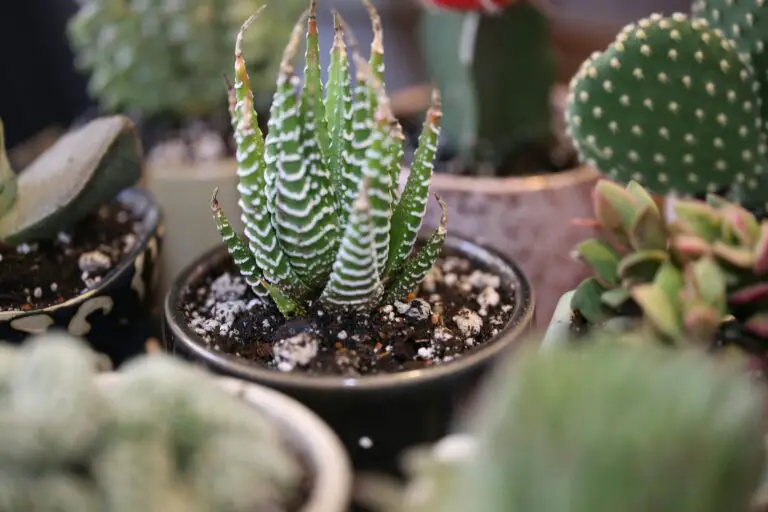
Distinct Characteristics of Haworthia Venosa
Welcome to a world where the intricate beauty of Haworthia Venosa, the tessellated succulent, blossoms. This remarkable plant invites onlookers into its mosaic of life, a tapestry woven by nature’s hand.
Envision the Haworthia Venosa’s leaves, like stained glass in Mother Nature’s church, each leaf a puzzle piece tessellating into the next. The leaf patterns are more than just appealing to the eye; they speak of an evolutionary mastery that allows this succulent to thrive under the harsh African sun. Each tessellation acts as a translucent window, filtering sunlight into the plant’s deeper tissues, ensuring every bit of light is harnessed efficiently.
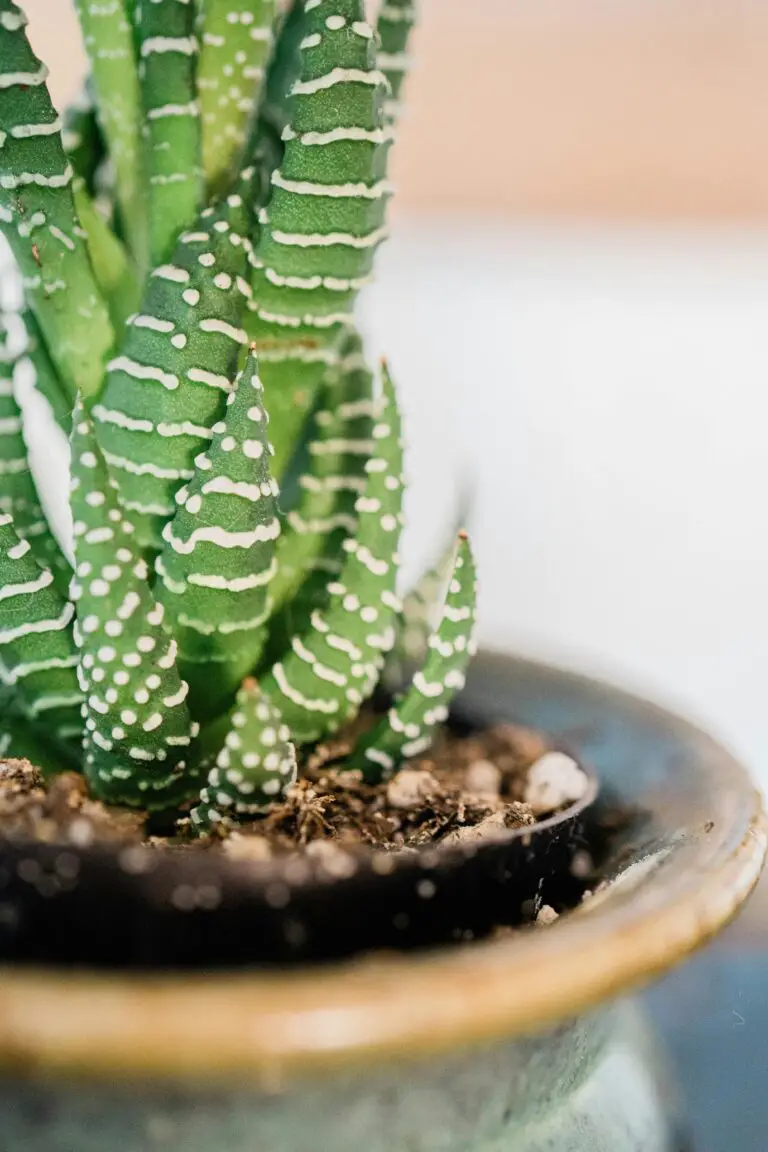
What’s truly fascinating about Haworthia Venosa is its growth habit. Unlike the rapid sprawl of some succulents, it opts for a more composed, poised expansion. Clustered together, the leafy rosettes spread slowly, creating a visual delight. It is a patient grower, invests time in strengthening its foundation, and gradually establishes a robust presence, embodying resilience and understated grandeur.
Enthusiasts appreciate Haworthia Venosa for its adaptability—its ability to acclimate to various indoor environments makes it an excellent companion for both seasoned and budding succulent lovers.
These distinctive qualities are only the beginning. To dive deeper into the horticultural art of succulent care, explore this comprehensive guide. It’s a journey that will equip you with the secrets to nurturing these living sculptures.
With its point-to-point leaf artistry and slow dance towards maturity, Haworthia Venosa doesn’t just grow; it performs a silent ballet, inviting all to pause and appreciate the complexities wrapped in its simplicity.
Ideal Growing Conditions for Haworthia Venosa
Unlock the secret to success with Haworthia Venosa, a jeweled treasure among succulents! This striking plant, with its tessellated leaves, captivates with patterns reminiscent of tribal art, offering a touch of exotic allure to your indoor garden. But what does it take to cultivate such an enigmatic plant successfully? Let’s illuminate the perfect environmental tapestry for a thriving Haworthia Venosa.
Imagine your Haworthia Venosa basking in the dappled shade of a rock formation in its native South African habitat—that’s the kind of gentle light it craves. Too strong a sunlight can scorch its delicate patterns, while too dim an exposure can dull its vibrant design. Indoors, place it where morning or non-direct light can tease out its deep green hues without overpowering its constitution, much like the nuanced light by a north-facing window.
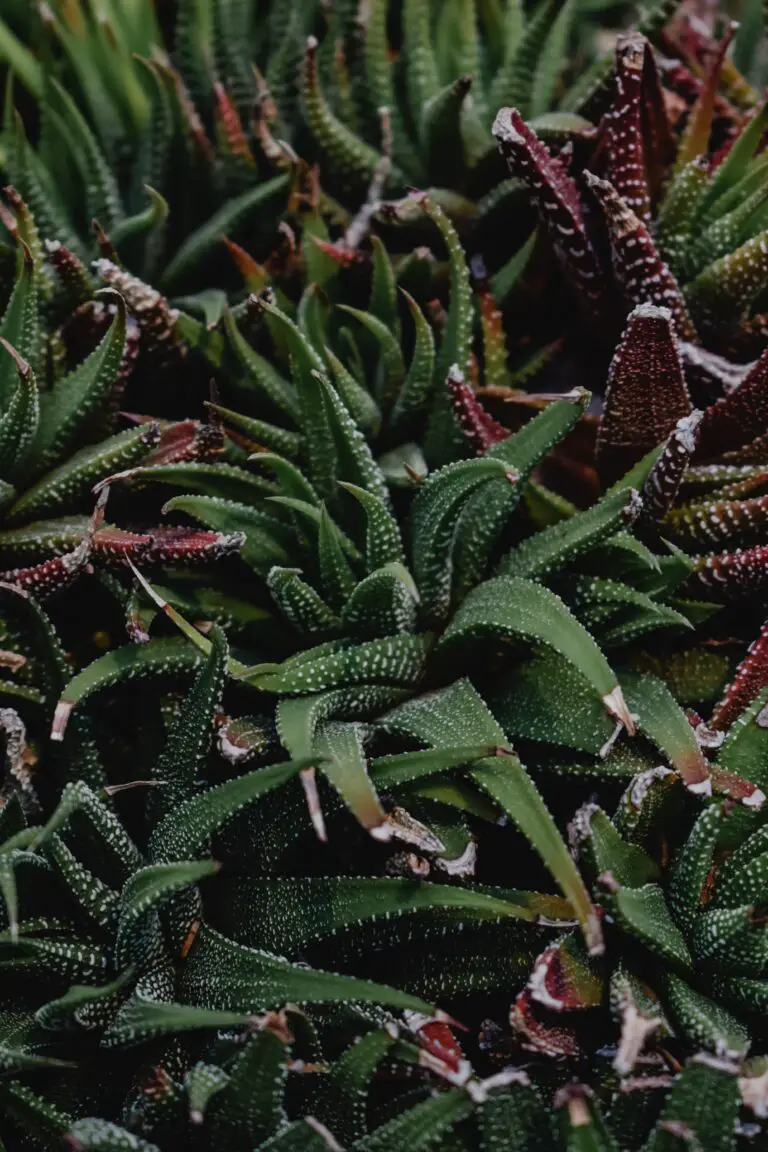
Next, let’s weave in the threads of temperature preferences. In nature, Haworthia Venosa enjoys the warmth by day and a cool caress by night. Your mission? To replicate these conditions by keeping it comfortable during the day—think room temperature, around 65°F to 80°F (18°C to 27°C). Come nightfall, a slight dip to 55°F to 60°F (13°C to 15°C) will mimic the natural cooldown of its arid homeland. This contrast is not merely a preference; it’s an intricate dance for its survival.
And what about humidity, you ask? This succulent’s thick, tessellated foliage tells a tale of low-humidity origins. It’s a plant that thrives in aridity, finding solace in the breathable atmosphere of your living space. So keep the air around it as dry as the wisps of cloud in a desert sky. Beware of the damp; Haworthia Venosa is more likely to complain about water in the air than thirst.
While Haworthia Venosa is undoubtedly self-sufficient, a well-drained soil mix specifically for succulents can elevate its well-being. Just like a well-tailored gown can make a star shine brighter on the red carpet, the right soil enhances this succulent’s chance to dazzle.
In a nutshell, the secrets to a prosperous Haworthia Venosa are simple yet intricate: give it mottled light to reveal its patterns, temperature fluctuation to weave the rhythm of its growth, and a dry climate to highlight its natural poise. Treat it as the natural artwork it is, and this tessellated marvel will reward you manifold!
The Art of Watering Haworthia Venosa
Dive into the riveting realm of Haworthia Venosa, where each droplet of water can unfold a masterpiece of growth. Discover how the proper watering technique is less of a routine chore and more of an art form that unlocks the full potential of this tessellated beauty.
Timing and Techniques: Watering Like a Pro
Imagine a water schedule that’s as unique as the patterns on Haworthia Venosa itself. Instead of sticking to the rigidity of the calendar, learn to judge the plant’s thirst through its leaves. Refined gardeners recognize that the succulent whispers its needs through subtle cues — a slight wrinkling here, a gentle yield to a soft touch there.
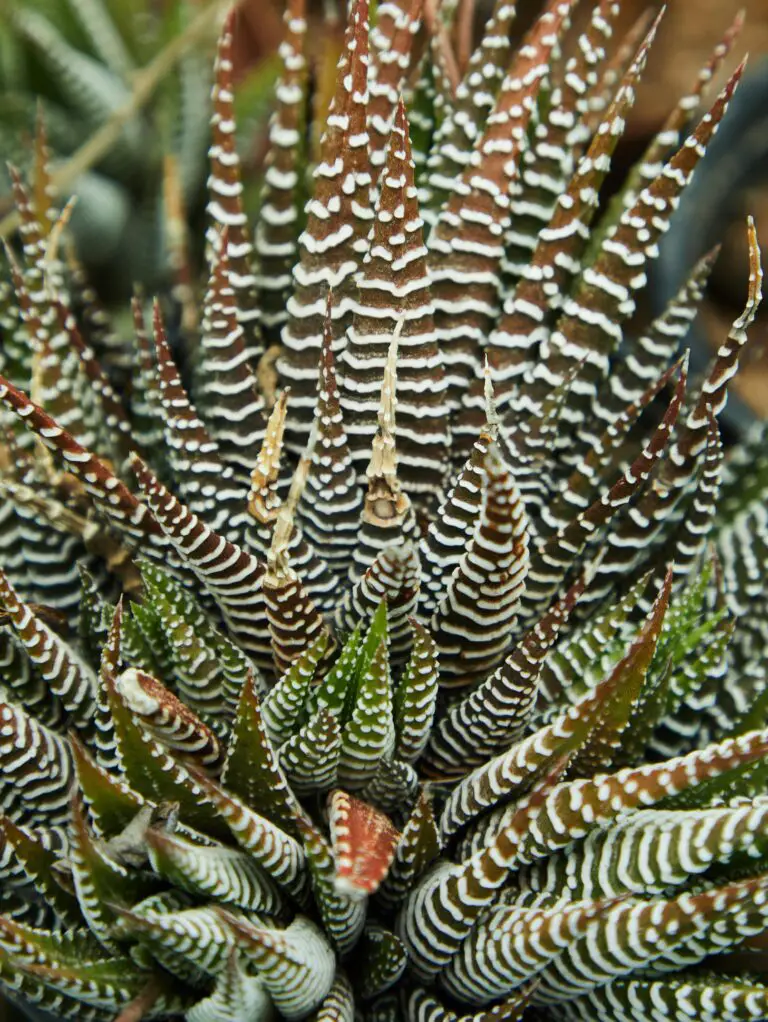
In the life of an experienced cultivator, a Haworthia Venosa thrived, despite the unpredictable swings of a busy schedule. By understanding that deep, infrequent watering encouraged strong root growth, the gardener mastered the delicate balance between drought and drench — exemplifying the essence of succulent care.
Signs to Watch For: When to Water and When to Wait
It’s not just about watering; it’s about being aware. Over-watering can lead our beloved Haworthia down a path of root rot and despair. Conversely, under-watering can leave it gasping for moisture. Keen observation is paramount. Does the soil feel Sahara-dry to the touch? Is there a sensation of lightness when you lift the pot? These are nature’s signals, prompting you to quench its thirst with a generous pour.
On the flip side, a Haworthia that’s swimming in moisture is a cry for help. Beware of the tell-tale signs — leaves that turn translucent or yellow suggest an SOS for less water and more love. At the hallmark of optimal care, a well-hydrated Haworthia boasts a robust form, with leaves like faceted emeralds, begging for the admiring gaze of any passerby.
Through the art of attentive watering, your Haworthia Venosa will not only survive but will thrive, parading its mesmerizing patterns to any onlooker fortunate enough to witness its display of natural splendor.
Soil and Fertilization Needs
Unraveling the mysteries of the perfect soil mix for your Haworthia Venosa can feel like piecing together a botanical puzzle. But fear not – with a few expert tips, you’ll be cultivating this tessellated treasure with the finesse of a seasoned gardener.
The Ideal Soil Structure
Imagine this: You’re a Haworthia Venosa, your roots are craving a home that’s akin to a cozy yet breathable abode. What you’ll need is a soil mix that whispers ‘drainage’ but also holds enough moisture to keep you quenched. A loamy, sandy soil, rich in perlite or coarse sand, provides the perfect balance, mimicking the native South African earth your Haworthia calls home. Think of it as crafting a custom-made mattress for your plant—only the best will do!
Feeding Your Foliage Friends
Like a master-chef concocting a nutritional feast for their guests, the right fertilization approach for Haworthia Venosa can transform it from just surviving to absolutely thriving. A gentle, half-strength dose of balanced, water-soluble fertilizer, sprinkled sparingly during the growing season, is your secret ingredient for enticing those enigmatic patterns to emerge vibrantly.
Remember, over-zealous feeding is the nemesis of your succulent’s success. Envision the ‘less is more’ concept; a light touch of nutrients is akin to a sprinkle of seasoning—a little goes a long way.
Now, let’s dive into a visual journey where you can see these tips brought to life in the cozy corners of a fellow succulent enthusiast’s home. Feast your eyes on this practical guide to repotting and caring for Haworthia—including that critical soil and fertilization advice:
Propagation Techniques for Haworthia Venosa
Welcome to the intriguing world of Haworthia venosa, the small, but mighty, tessellated succulent from South Africa. As a novice or seasoned green thumb, you’re likely aware that propagation is like unlocking the next level in your horticultural journey. Let’s delve into the propagation playbook for Haworthia venosa, a succulent that’s as resilient as it is stunning.
Commencing with Offsets
Starting with offsets – nature’s little cloning marvels – is both practical and rewarding. Picture this: A vigorously growing Haworthia venosa, punctuated by a brood of mini-me’s sprouting at its base. These offsets can be gently separated from the mother plant using a clean, sharp knife. It’s akin to helping a young adult move out, giving them roots of their own to take hold in a new pot with well-draining soil – a succulent-safe mix is your best bet.
Leaf Cuttings: A Journey of Patience
Leaf cuttings, albeit slower, present a test of patience for those willing to endure. Select a healthy, plump leaf, easing it off with a twist or a snip. Lay it on a bed of damp, sandy soil and wait for the magic to happen. In weeks, you’ll witness a tiny replica of your beloved Haworthia venosa emerging triumphantly. It feels like a botanical rite of passage, doesn’t it?
Seed Propagation: Embracing the Challenge
For the purists and the patient, propagating from seed is a true testament to your gardening prowess. Starting with a clean slate, you’ll sow the minuscule seeds in a blend of sand and compost. With consistent moisture, warmth, and a whisper of encouragement, you’ll see seedlings surface, teeming with potential. From there, it’s a nurturing game, championing these youngsters as they grow into tessellated wonders.
To illustrate these techniques in action, here’s a video that captures the essence of Haworthia venosa propagation in a vivid, tangible manner:
Remember, propagation is both art and science; your Haworthia venosa is the canvas, and your care is the brush. Whether you propagate with offsets, leaves, or seeds, each method offers its own unique adventure and fulfilling experience. Dive in, enjoy the process, and watch your succulent collection multiply before your very eyes!
Common Pests and Problems
For the avid gardener or the succulent enthusiast, Haworthia Venosa is a gem that captivates with its tessellated leaves and rugged charm. Yet, this stoic succulent does not escape the watchful eyes of common pests. Detecting those sneaky intruders early can be the difference between a thriving plant and a troubled one.
Watch Out for the Little Critters

Picture this: You wake up to a beautiful sunny day, and as you wander to admire your Haworthia collection, you notice tiny ant highways leading to your Haworthia Venosa. Ants themselves are not the issue; it’s the aphids or mealybugs they farm on the sap of your plants, leading to sickly, weak succulents. The first line of defense is cleanliness. Keep your growing area debris-free and consider a natural ant repellent—cinnamon is an excellent choice!
The Sap-Sucking Scourge
Mealybugs and aphids enjoy the sweet sap of Haworthia Venosa, but their feast is your famine. These sap-suckers can cause stunted growth, yellowing leaves, and a general decline in plant vigor. For a non-toxic approach, a little alcohol on a cotton swab can make quick work of these pests. For more extensive issues, insecticidal soaps or neem oil sprays are your best friends. Monitor your plants regularly, as early detection makes all the difference.
Preventative Tricks for Plant Prowess
Prevention is as crucial as intervention. Consider these steps to safeguard your succulents from pests. First, strict quarantine for new plants can prevent unseen pests from becoming epidemics. Second, a healthy plant is less likely to succumb to pests, so ensure your Haworthia Venosa gets the right balance of light, water, and nutrients. Lastly, periodic inspections can catch problems before they become catastrophes. Arm yourself with a magnifying glass and inspect your plants for any signs of distress regularly.
Remember, being proactive with your Haworthia Venosa’s health isn’t just about reacting to problems; it’s about creating an environment where issues are less likely to arise in the first place. So don your gardening gloves, arm yourself with knowledge, and keep those pests and problems at bay!
Design and Display Ideas
When it comes to adding a touch of greenery to your personal space, the Haworthia Venosa stands out with its tessellated texture and low-maintenance charm. But how do you transform this succulent from a mere plant into a striking decor element? Let’s delve into some creative ideas that will turn your Haworthia Venosa into the star of any room.
Choosing the Perfect Pot
First impressions matter, and choosing the right pot can make all the difference. Imagine your Haworthia Venosa nestled in a geometric terracotta pot that accentuates its angular leaves. Or, for a modern twist, how about a sleek matte black pot that makes those green patterns pop? Consider a pot with a color that contrasts with the plant to draw focus instantaneously. The key is to complement the natural symmetry of the Haworthia Venosa with a pot that serves as its stage.
Location, Location, Location
Now, where to put this artistic assembly? Picture your Haworthia Venosa on a sunlit windowsill, basking in the glow of the morning light. Or place it on a centrally-located coffee table, where it can spark conversation among guests. A ledge near your workspace can also become an inspiration spot as the Haworthia Venosa brings life to your daily grind. Remember, it’s not just about the plant; it’s about interacting with the space around it.
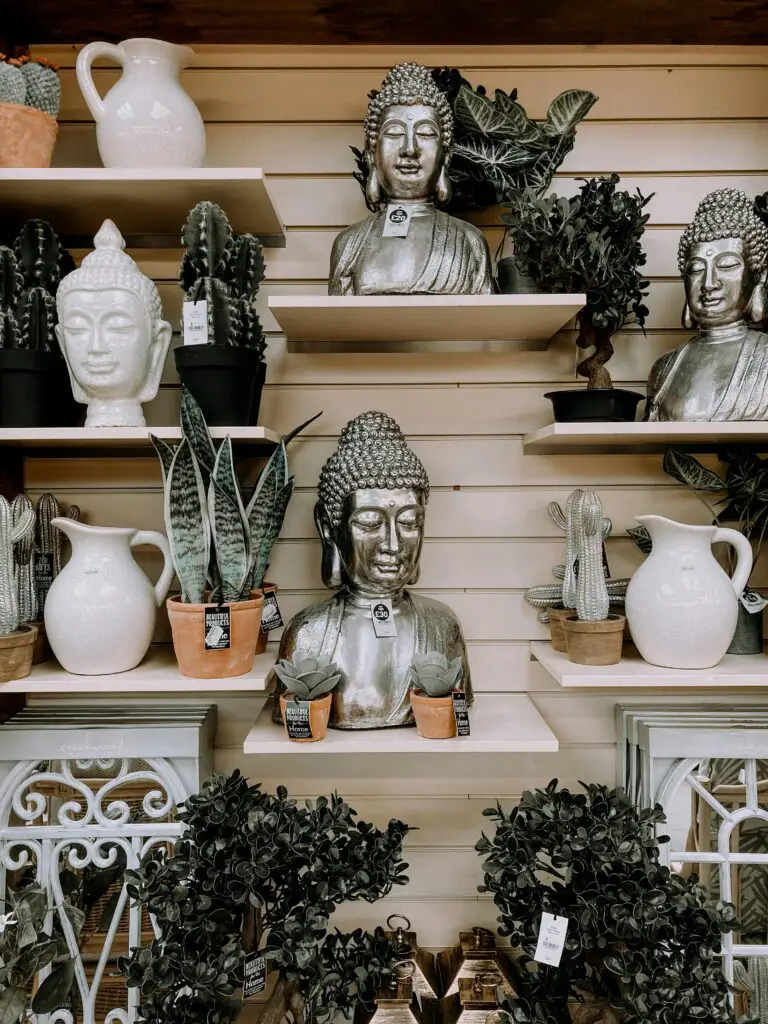
Companion Planting
Why stop at one? Create a vignette by pairing your Haworthia Venosa with other succulents of varying shapes and sizes. A tall Aloe Vera or a rosette-forming Echeveria can provide a multi-height display, enhancing the visual interest. Grouping plants with similar light and water requirements makes care easier, and the contrasting forms create a captivating living tapestry. Think of your succulent display as a conversation among plants, each bringing a unique story to the table.
Seasonal Swaps
As seasons change, so can your display. Swap out pots to match seasonal decor—warm tones for autumn, pastels for spring, or vibrant hues to celebrate summer. Festive ornaments during the holiday season can frame your Haworthia Venosa, turning it into a botanical centerpiece. It’s a simple change that keeps your space feeling fresh and in tune with the rhythms of nature.
Crafting an engaging environment with Haworthia Venosa isn’t just about the greenery; it’s about creating experiences and playing with aesthetics. A well-planned display considers both the unique qualities of the plant and the characteristics of the space it inhabits. With these ideas, your Haworthia Venosa won’t just exist in your home or office; it will thrive, flourish, and inspire.
Haworthia Venosa in Your Succulent Collection
Embark on a botanical journey and elevate your indoor green space by introducing the ever-charming Haworthia Venosa into your succulent family! Dive right in and explore the art of synergizing this tessellated beauty with an array of companion plants. As a proud member of your botanical haven, let’s uncover how this enchanting succulent can harmonize effortlessly with your existing collection.
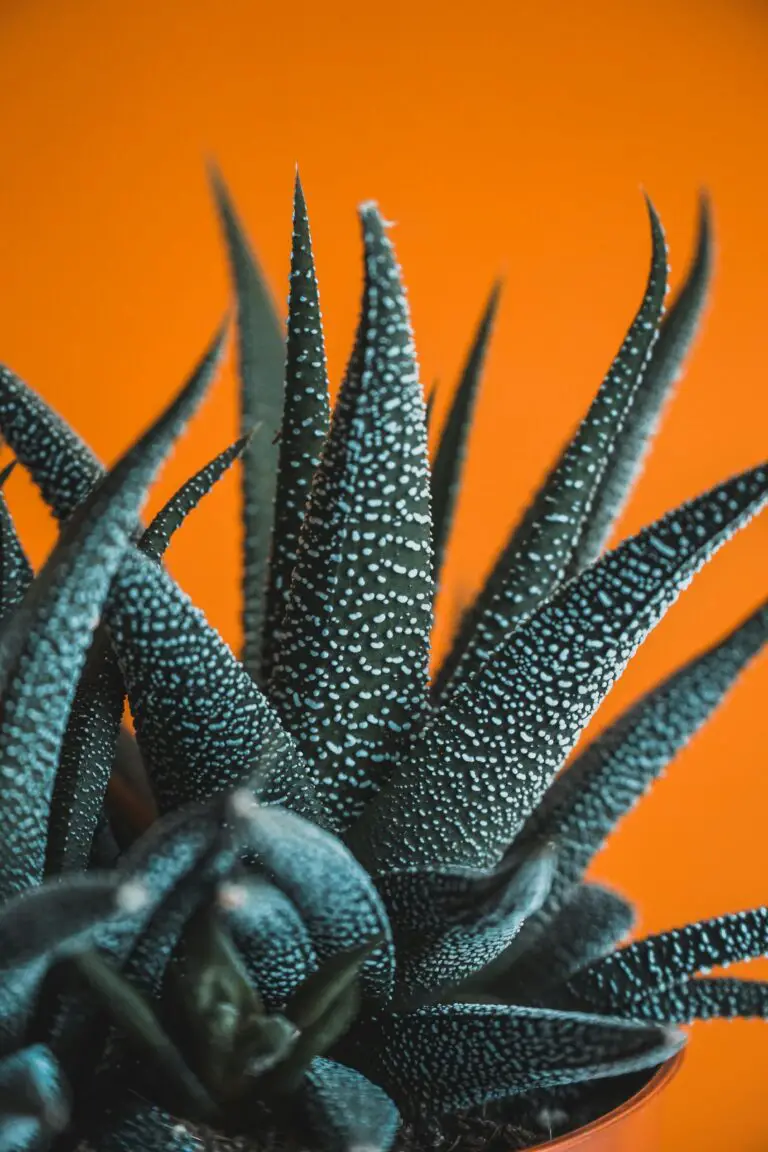
Lighting the Way: Haworthia Venosa thrives in bright, indirect light. It’s the ideal plant to sit alongside aloes or echeverias, which often have similar lighting needs. Picture a sun-dappled shelf where your Haworthia catches the morning rays without competing with its neighbors, its distinctive patterns standing out amid a sea of green.
Water Wise Companions: Partner your Haworthia Venosa with fellow drought-tolerant succulents. Sedums, for instance, demand minimal watering and mirror the Venosa’s thirst for a less-is-more approach. This creates a low-maintenance tableau that looks after itself, allowing you to revel in their combined beauty with little intervention.
Texture Talk: The tessellated texture of Haworthia Venosa can be splendidly offset by the plush leaves of a Kalanchoe or the angular geometry of an Agave. Creating this contrast in textures can lead to a visually compelling showcase that invites onlookers to lean in closer, drawn by the intrigue of nature’s variety.
Color Coding: While the Venosa boasts a cool, verdant hue, pairing it with succulents that offer a pop of color, such as the ruby-red tips of a ‘Fire Stick’ plant, can animate your collection. This juxtaposition not only draws the eye but also highlights the Venosa’s understated elegance.
Future Friends: Should you wish to experiment, consider broadening your collection with the addition of some cacti. While the textural disparity is vast, their mutual respect for arid environments makes for an unexpected yet successful alliance.
Remember, the Haworthia Venosa is more than just a plant; it is a living sculpture, a textural masterpiece ready to infuse vibrancy into your succulent ensemble. By considering its light, water, texture, and color preferences, you can seamlessly weave it into your collection, creating a green mosaic that enraptures and inspires. So go forth and let your green-thumbed creativity run wild!
Frequently Asked Questions about Haworthia Venosa
Embarking on the adventure of cultivating Haworthia Venosa, also known as the Tessellated Succulent, is like discovering a living mosaic under your care. Let’s dive into some of the most curious and important questions that plant enthusiasts, like you, frequently ponder about this strikingly patterned plant.
What are the optimal conditions for Haworthia Venosa to thrive?
Imagine a succulent that thrives under the protection of a rocky ledge in its native South African habitat. That’s our modest Haworthia Venosa, basking in dappled sunlight. Your mission? Replicate these conditions. Provide bright, indirect light and a temperate environment, and you’ll witness this succulent exhibit its best colors and form—truly a display of nature’s artwork in your living space.
How often should I water my Haworthia Venosa?
Visualize the rainfall patterns of a semi-arid region—infrequent yet plentiful. That’s the routine you want to emulate. Let the soil completely dry out between waterings, then drench deeply, allowing every root to sip its share. Overwatering is the nemesis here, leading to a tragic, mushy demise—like a well-intentioned friend hug that lingers too long.
Can I propagate Haworthia Venosa? What’s the best method?
Indubitably! Propagation is where the true garden magic happens. Think of it as your favorite plant’s encore. Offsets, or “pups,” will appear at the base, waiting for your gentle intervention. Sever the connection with a clean cut, allow for a brief healing period, and rehome them in well-draining soil. You’re not just growing plants; you’re expanding your very own succulent legacy.
What are the common problems when growing Haworthia Venosa, and how do I fix them?
Sometimes, despite our best intentions, our green companions hit a rough patch. Browning leaves? It’s a sunburnt signal indicating too much direct sunlight. Mushy, transparent leaves? A clear sign of waterlogged roots. Solution: Retreat from the sun’s direct wrath and recalibrate your watering rhythm. Keep a watchful eye, and Haworthia Venosa will soon return to its tessellated glory.
For a visual guide to proper care, take a peek at this insightful video:
Remember, cultivating Haworthia Venosa is more than just a botanical endeavor—it’s a journey of learning and connection with the natural world. Embrace these FAQs as stepping stones to becoming a seasoned succulent guardian.
